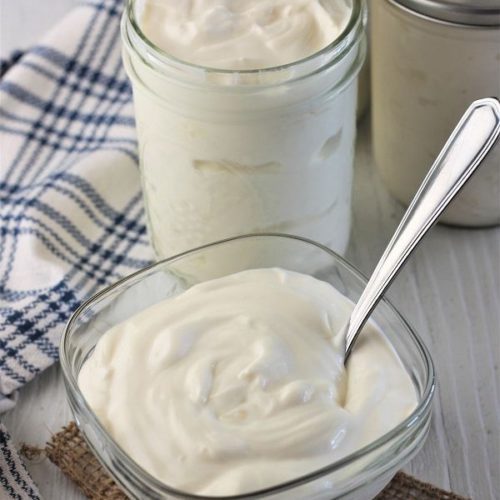Discover the wonders of Greek yogurt, a versatile and nutritious superfood that has become a staple in kitchens around the world. This tangy and creamy dairy product is not only a delicious snack but also a versatile ingredient that can be used in a variety of dishes. From its rich nutritional profile to its culinary adaptability, Greek yogurt offers a multitude of benefits that cater to both your health and culinary preferences. Whether enjoyed on its own, incorporated into recipes, or used as a healthy substitute, Greek yogurt is a true culinary gem.

Exploring Greek Yogurt - A Creamy and Versatile Superfood
Greek yogurt stands as a nutritional powerhouse and culinary ally, offering a range of health benefits and endless culinary possibilities. Embrace its creamy texture and tangy flavor to enhance your meals, support your well-being, and add a delightful touch to your everyday dishes.
Equipment
- bowl
- whisk
- heavy bottom pan
- cheese cloth
- clean towel
Ingredients
- whole milk
- plain yogurt
Instructions
- Pour the whole milk into a heavy-bottomed saucepan and heat it over medium-low heat. Use a cooking thermometer to monitor the temperature.
- Heat the milk until it reaches around 180°F (82°C). Stir occasionally to prevent scorching.
- Allow the heated milk to cool naturally until it reaches around 110°F (43°C).
- In a small bowl, mix the 2 tablespoons of plain yogurt with a few tablespoons of the cooled milk to create a smooth mixture.Gently whisk the yogurt mixture into the remaining cooled milk in the saucepan.
- Pour the milk mixture into a clean mixing bowl.Cover the bowl with a clean towel and place it in a warm, undisturbed area for fermentation.
- Allow the mixture to ferment for 6-12 hours, or until it thickens and sets to a yogurt-like consistency. The longer the fermentation, the tangier the yogurt.
- After the desired fermentation time, check the yogurt's texture and taste. It should be thicker and tangier.
- For Greek yogurt, strain the fermented yogurt to remove excess whey and further thicken it.
- Line a fine mesh strainer or colander with cheesecloth and place it over a clean bowl.Gently pour the yogurt into the strainer and let it drain in the refrigerator for a few hours or until desired thickness is achieved.
- Transfer the strained Greek yogurt to a clean container. It's now ready to be enjoyed or used in various dishes.
- Serve your Homemade Greek Yogurt as is or customize it with your favorite toppings such as honey, fruits, or nuts.
Video
Notes
- Ensure a warm environment for fermentation, around 100-110°F (37-43°C), to encourage the growth of beneficial bacteria.
- Use a store-bought plain yogurt with live active cultures as your starter.
- Save a portion of your Homemade Greek Yogurt to use as a starter for your next batch.
- The fermentation time can vary based on factors such as room temperature and desired thickness. Adjust accordingly.
- Save some of the whey removed during straining – it can be used in smoothies or as a liquid for cooking and baking.
Nutrition
Serving: 700g
Tried this recipe?Let us know how it was!
